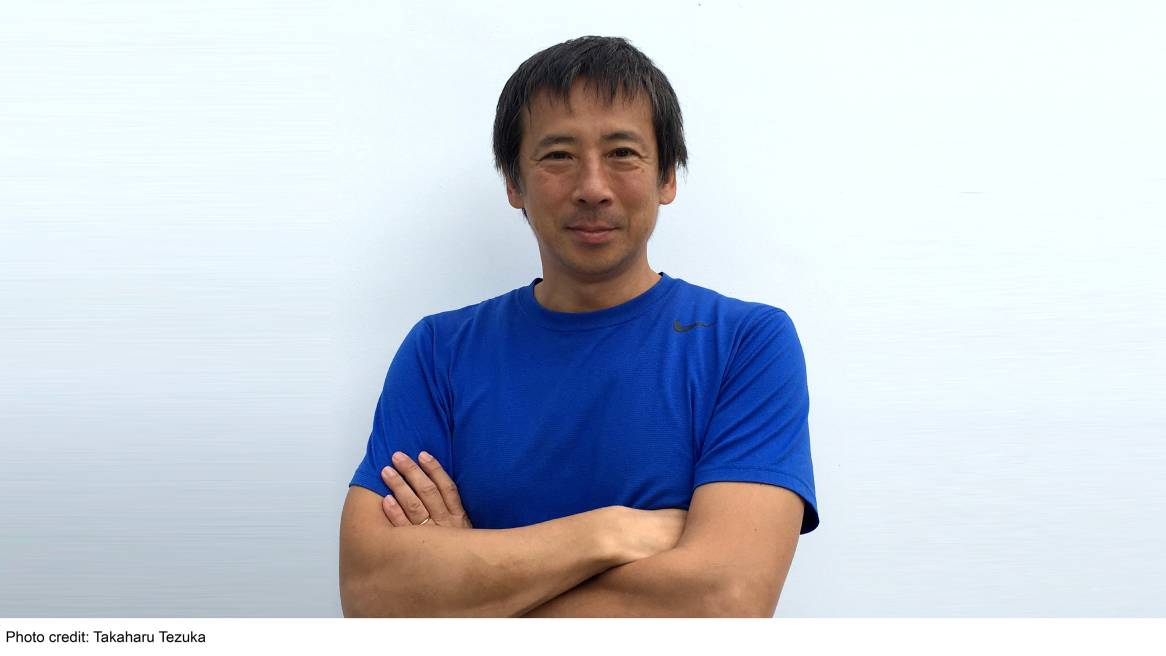A Conversation with Takaharu Tezuka
Tokyo-based architect Takaharu Tezuka and his wife Yui, also an architect and the co-founder of their eponymous studio, is an award-winning architect whose work includes the Fuji Kindergarten, named the best school in the world by OECD (Organisation for Economic Co-operation and Development) and UNESCO. The studio received the Global Award for Sustainable Architecture from UNESCO and Takaharu’s TED Talk recorded 7th in the world for the number of views in 2015.
He lectures all over the world and the couple’s theory on the design of environments for children is published as the Tezuka Architects: The Yellow Book, by Harvard University. He talks to Catherine Shaw architecture and design author and writer about his idiosyncratic habit of only ever wearing cobalt blue clothing, why he sees himself as an outcast, and how he spent a year making a 48-metre-wide panel for a church, using tiny dots to painstakingly create the effect of being immersed in a forest.
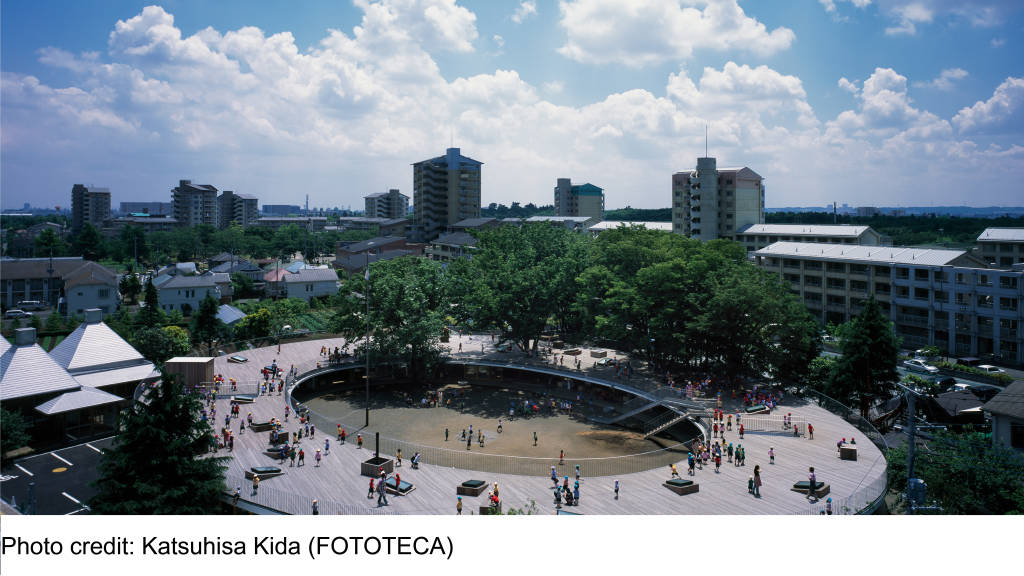
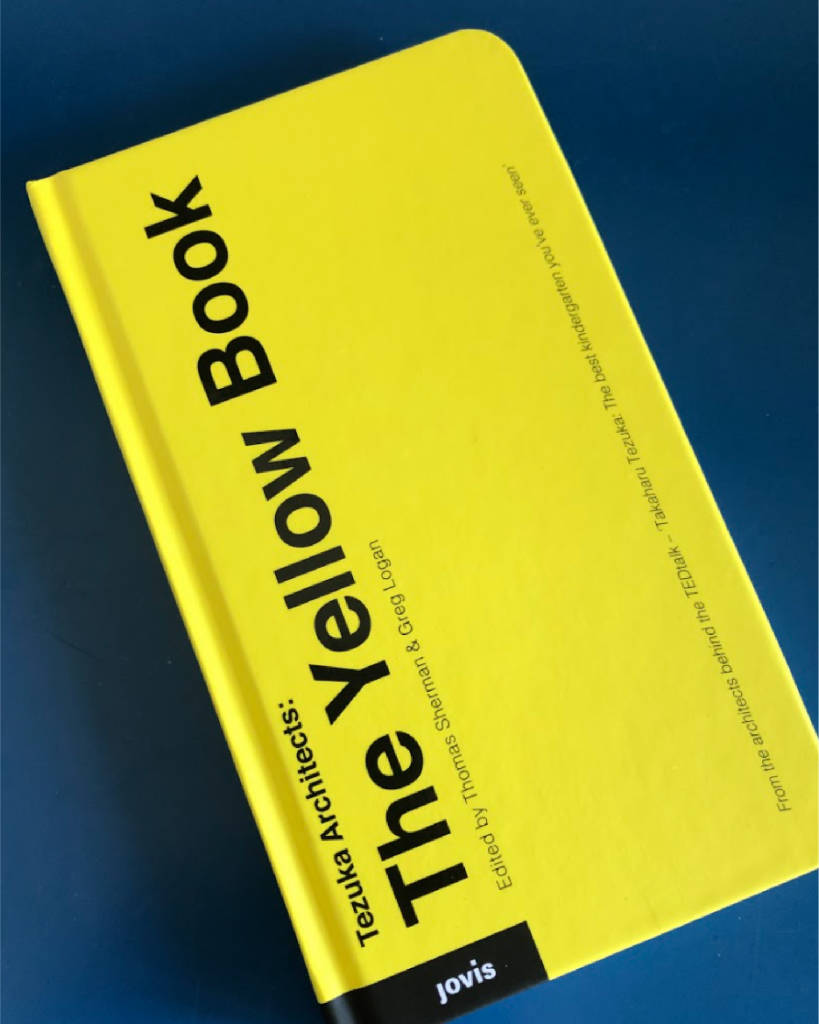
You’re known for only ever wearing a blue t-shirt. Why?
I do it because my wife told me to [laughs]. She loves the colour red and has been wearing red ever since she was a small kid, and I had started wearing blue when I worked with Richard Rogers. He had been a student of James Stirling who also wore blue. Then in Richard’s office everyone started wearing blue, and he didn’t like that so he started to wear shocking pink. No one followed him, and I kept on with my blue shirts. I married the lady and we bought a yellow car, and when we had our daughter we decided she could become yellow, and when we had our son, he got green. Now that everybody knows our four colours, we can’t change.
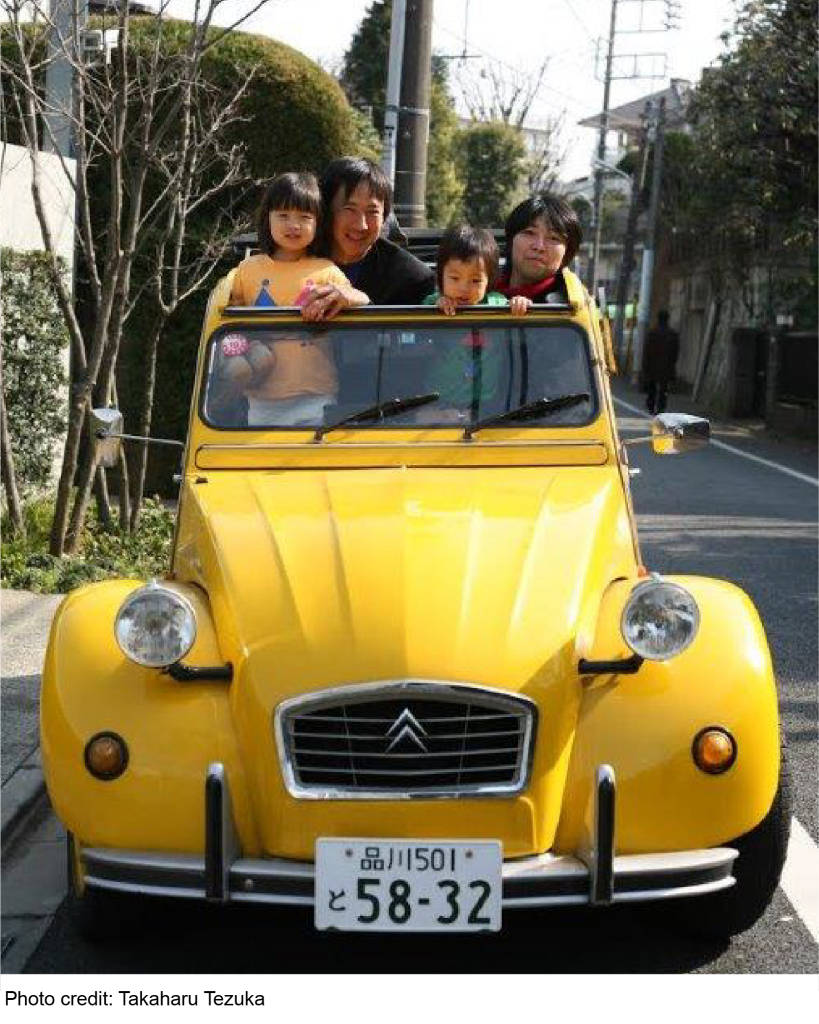
Do you think people outside of Japan have a stereotypical expectation of what a Japanese architect should be?
I am very different to other Japanese architects. I am like an outcast. The way I explain architecture is very different to how other architects in Japan explain their work, so it is difficult to categorise me as a Japanese architect.
Why do you feel you are different? Is it because you’ve worked in Europe, or have you always approached your work from a different perspective?
I’ve always been different from the others. The difference is first because I come from an international family. My grandfather lived in the United States, and my father was born in Shanghai. And I went to the Musashi Institute of Technology and the University of Pennsylvania to study architecture, and I then got my architectural work experience with Sir Richard Rogers.
Tell me more about your grandfather.
My grandfather’s house is very old. My family have lived there for 350 years. The house is 130 years old, because the old house was burnt down in the city fire, so somehow I fit between tradition and an international life. We have lived in a different way to other people. Of course I studied architecture in Japan too, but I always felt something strange about understanding Japanese architecture and the modern movement, because it was always thinking about shapes and proportions, and I felt that architecture was something different to that.
Our family had the old house, and it is very nice, but then I went to the United States and I learned about the logic of how architecture should be, and I learned about life from working with Sir Richard Rogers. When I returned to Japan, the things going on there were opposite to what I believed. I am not interested in fashion. I want to design something beyond fashion, something that will last for several hundred years. Perhaps 500 years.
“…architecture is not a thing, but an event. Whatever you do with architecture will change society or a life… architecture can be art, but it is not artwork.”
What advice would you give young Japanese architectural students now? How would you help them to avoid going down that path and to see what you see?
I have been a professor for over twenty-five years, and I always say architecture is not a thing, but an event. Whatever you do with architecture will change society or a life. If you do the right thing, you can change the world. Some people say I am a big dreamer, but I don’t think so. When I designed a hospital for children with cancer (shown below), and I also designed a kindergarten for children with learning difficulties, I could see how architecture is capable of changing human life. So I always say to my students, if you don’t think about what you can do beyond architecture, then your life is in vain. Do something or there is no meaning. It is just construction.
Secondly, architecture can be art, but it is not artwork.
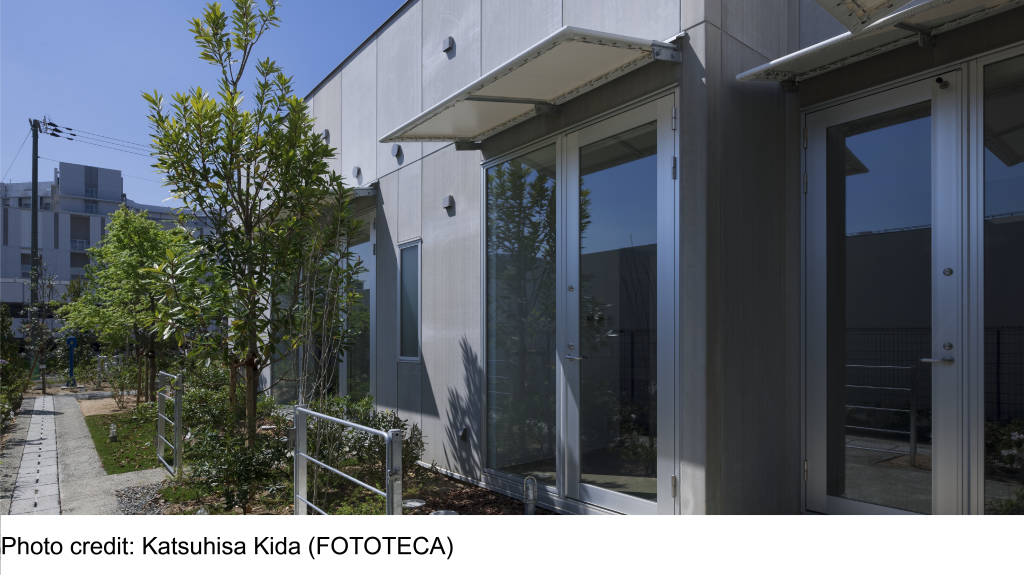
What do you mean by that? A lot of architects like to think of their work as art.
Whatever you do can be art. Art is a very big category, and it forms the basic understanding of human beings. We can’t remove art from human emotions. Architecture is not art; it is about sharing, whereas art does not necessarily have to be shared. It can be for yourself. But architecture is different – you design for others. So, you have to think whom you are designing for. This is not the client. I am talking about the user. That is whom you have to think about.
How often do you return to your projects to watch how people are using them?
I do it all the time.
I was especially interested in your school project for autistic children. It feels like you understand their particular issues, and it must be so interesting to observe how they use it. Architecture must be a constant learning experience.
Yes, you should learn from experience. When I was teaching at Harvard, one of the students asked how could I know so much about kids. I knew he had a girlfriend. I asked if he was planning to ask her to marry him and, when he said yes, I told him that if they have kids he will understand. You need to go into the lifestyle. My elder brother is disabled, and so I have learned a lot. As I get older, I learn more and more. And then, the way I do architecture means I am more in touch with people, and I can be wiser as an architect.
Do you ask more – or better – questions as you get older?
I get into more trouble, and find my way out.
Perhaps that is because you take more risks as you get older. I am intrigued by the wide range of your buildings, from homes and schools to religious buildings. Each is a specialist area for many architects – do you have a favourite typology?
I always feel that there is only one category in architecture: life. If you are trying to be yourself you will understand. You must be honest and think about how, for example, you would feel if you were staying in a hospital. You can’t get that feeling from a book. Many architects think there is one answer for how to design a hospital, but I don’t do that. I read the books, but I don’t trust them because if these books were good enough there would be no problems in a hospital. Most clients come to me expecting me to make some kind of a change in their field, so I try to find the truth. The truth is usually hidden. In a hospital for old people, a book will focus on things like the number of toilets and how close the patient is to the nurse, but if you are in hospital you want to see outside and see light. And you want good food. So it is important to think about these things too.
Before the pandemic you travelled a lot, so you saw different ways of doing things – is that how you kept an open mind? Seeing for yourself?
Yes. I travelled around the world. Obviously people in Japan have more money than people in India, but some people there have a better life. Sometimes people say the temperature should be 18-28 degrees, but you go to Bali and rich people are there, living outside, and life is not about money – it is about how you feel about your life.
So during the pandemic, when you haven’t travelled, how have you fed your mind and soul?
It is very difficult for me. I feel guilty about my past travel, and I should apologise about my carbon footprint, and recently, because I have had more time, I’ve walked around a lot more and seen things closely, but I must say that if I had not had the chance to travel around the world, I would not understand these things as fully.
Yes, not travelling has made us look around at the world in a very different way. If magazines are not important to you, do you listen to podcasts?
No. And I don’t watch tv, although I watch YouTube and use Google. I don’t read design online at all. In the next few days, my family and I will travel to Kyushu, about 800km from Tokyo, where there is a church [Church of Eaves] we designed. The pastor is famous for helping homeless people, and I will join in with my family. My son has been there before, and he wants to go back, so I have decided to join him. We have chosen to do something to help homeless people, and that is better than having a martini next to a swimming pool.
After COVID that is how we have changed the way we think.
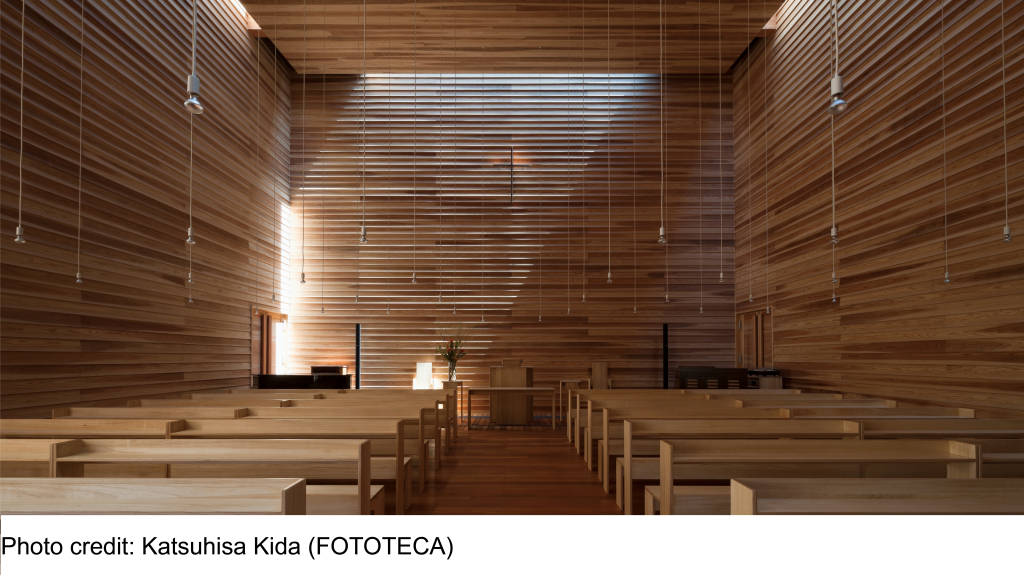
Do you read books?
Yes, I do. But fortunately I also have good conversations with great people like the pastor and social workers, and that is more fruitful than watching the news. I don’t trust the media at all – when I talk to people face to face I get true inspiration.
Do you collect anything?
I come from a family that traded ceramics – we have 350 years of tradition, and used to export through the East India Company. We had a house in Arita, and my grandfather set up a museum, but I don’t collect Arita ware because there is no end to that. I enjoy my life too much, so instead I do things to learn. For example, my digital watch – it is called The Pulsar and was inspired by a futuristic clock designed by the Hamilton Watch Company of Lancaster for the movie Space Odyssey in 2001, directed by Stanley Kubrick. They kept working on the idea and then made The Pulsar, which was the first watch to display time in a digital format.
I have bought five or six of them – but I don’t just collect them. I dismantle the watch so that I can understand it. And most of these don’t work anymore, so we put them back together again and make them work. That is my thing.
Some people who like the piano collect piano music CDs, but my way is to play the piano. I spend two to three hours at the piano every day. And food is interesting, so I cook. I try to see things inside, and I try to be in it.
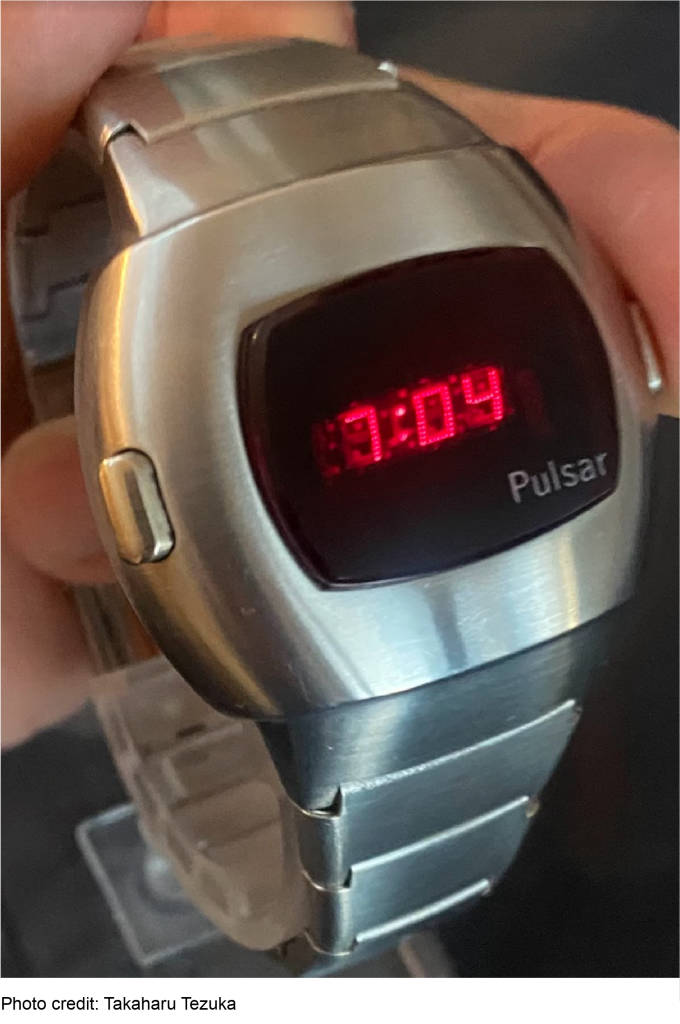
So, just like your designs have to have a meaning, what you do has to have meaning or it is just a thing?
Exactly. So I don’t mind that it is not an expensive watch – it cost me around $300 – but I would not sell it because I have learned so much from it. The knowledge is more important than the thing.
You mentioned you like to cook. Do you have a favourite food?
I cook a lot of different cuisines, including Japanese and French food, but not British food! I also cook Indian food. I’ve found out there are no boundaries, so I can’t say one is my favourite. I cook all kinds. People like to make collections, but I prefer to get hold of one thing and try to go deep and understand it.
My friends have four or five cars, but I have one car and it is a part of my life. I have one wife, and I have one favourite watch.
But you’ve got double value because your wife is also your architectural partner…
Yes, she is.
What about your favourite design era?
I like design between the 1960s and ‘70s, because that was a time when people thought technology would change the future. It was the time of the Beatles and Kennedy, and a time when technology flourished. That is what I like about the watch: people believed that life could change and become happier. I loved how optimistic the designs like the Pompidou Centre were, but after the mid-‘70s people became pessimistic.
We have had such a pessimistic two years – now it feels bad almost everywhere. Do you think there will be an era of new hope? We have stayed in our little worlds, and have become quite inward-looking and protective – now what?
The dark side is that people are becoming more nationalistic. I always used to have international interns in my office, and lots of people from outside Japan, so I don’t feel boundaries between people, but somehow website news is becoming so inward-looking. People don’t realise we are dependent on each other. We need to correct that somehow. People stay at home and forget about other people. On the bright side is that maybe it is an opportunity to change. Nature is constantly evolving. Change is part of life. Maybe it is a chance for us to become better.
Over the past two years I’ve relied so much on pictures for information, but now that I can walk into a place, I realise how different that is as an emotional experience.
Exactly. That is what we are missing.
That seems to be what you are looking for in your projects – the emotional experience?
I am optimistic. I think people come to see architecture because it is not just visual. They touch and walk around – it is different.
Is there a particular material you prefer to work with?
I am happy working with any material – plastic, concrete or stainless steel – but I have found timber to be a very interesting material. Timber has been part of our lives forever – my grandfather’s house is made of timber and 140 years old, and it is still extremely stylish and holds the life of people, and as timber gets older our taste gets better. That is what is interesting.
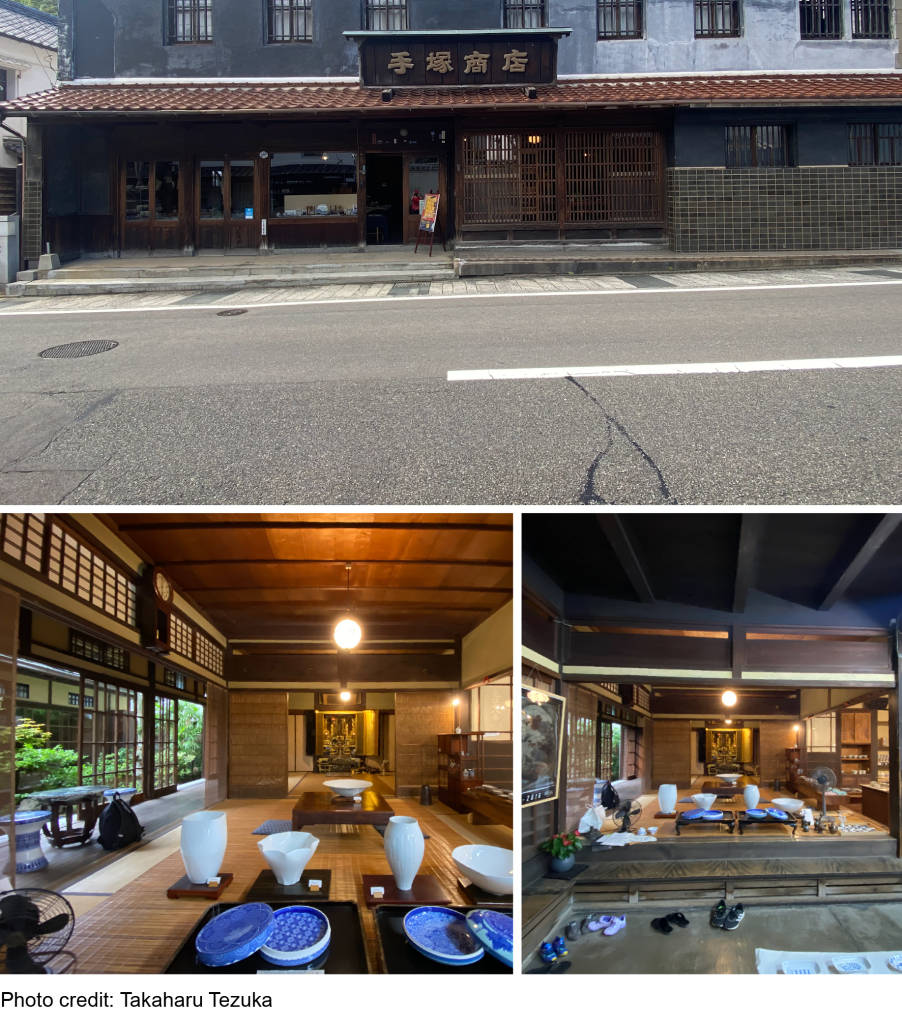
We recently designed a church (Niijima Gakuen Junior College Hall & Chapel) with a screen that is a painting that I drew. I used a machine to make a 48m wide panel with 6mm dots… using the dots to draw on the screen. It was a lot of work, but I had a lot of time, and it is really nice. I am not a Christian, but I do read the Bible, and the panel is like my idea of Eden. It took me a year to make the panels, and I really like the way they work with the light. If you use steel there is a separation; timber is somehow more emotional for me. It is nothing to do with being in control – steel relies on the manufacturer, but with timber I can cut every corner.
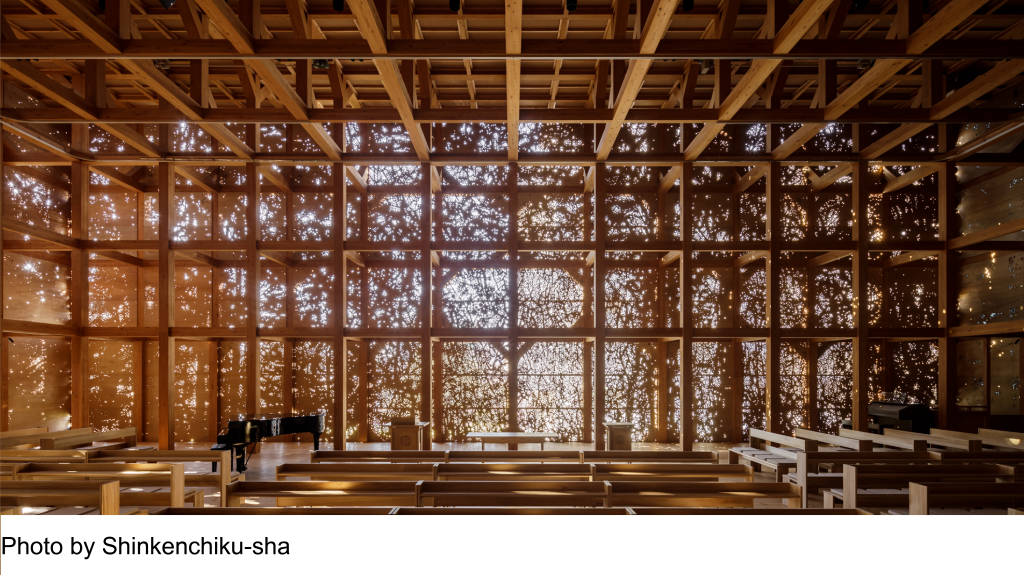
It looks like dappled light in a forest.
You can’t do that with a computer; you have to draw it yourself. This is an important work to me.
The scale is incredible! Like a real forest.
You can only achieve this with timber. With this project there are no boundaries between art and architecture. There is just one existence.
Did you find making it meditative?
Yes, I did. You have to go there to really feel it.
Ikkemashoo! [lets go!] I would love to see it.
Okay! I will take you when you next come to Japan. I want you to see it for yourself.
Thank you so much for talking to me today. Arigato gozaimashita!

